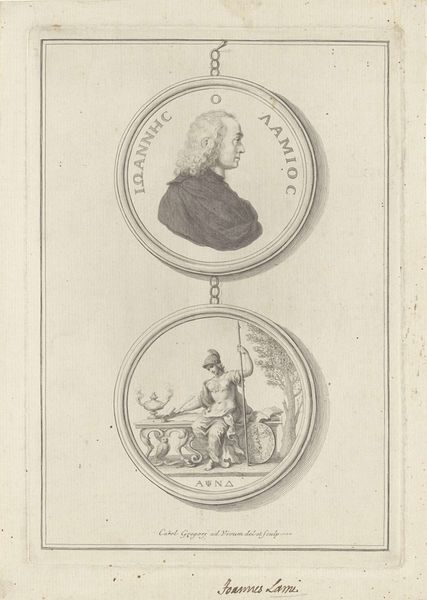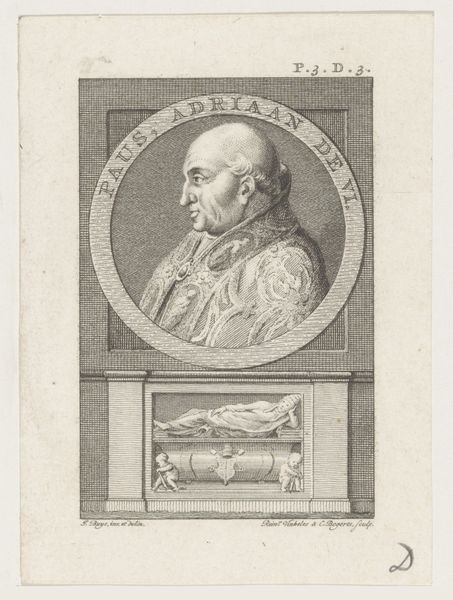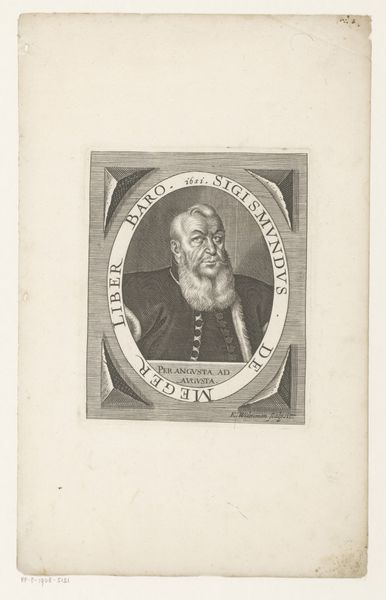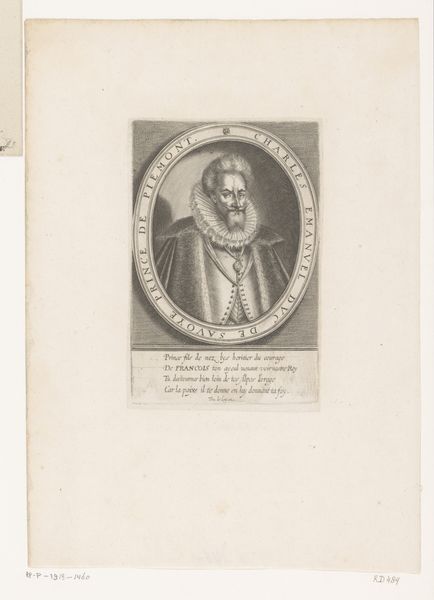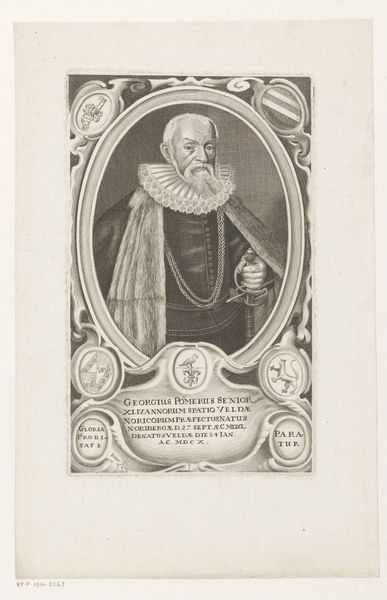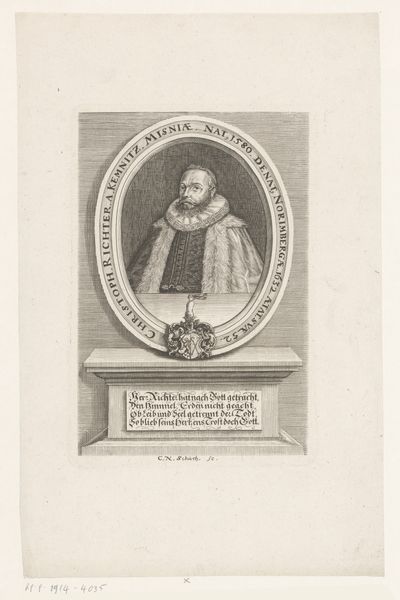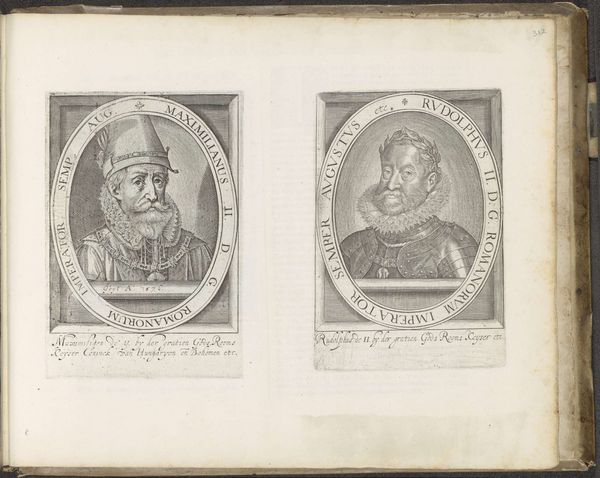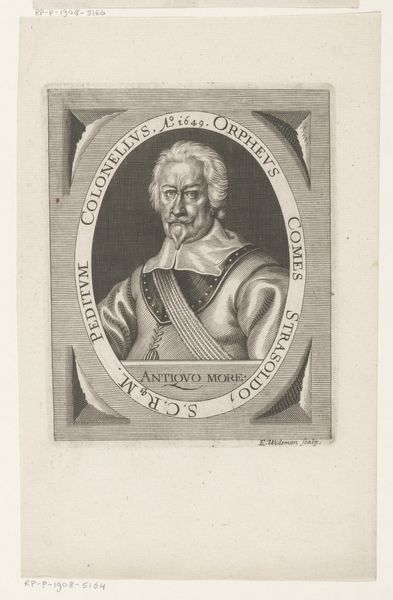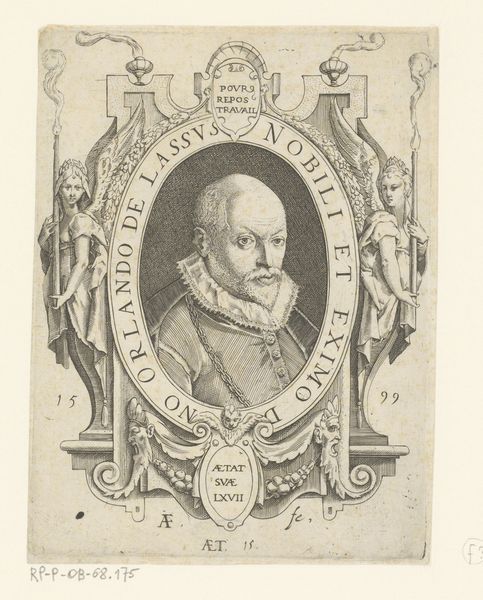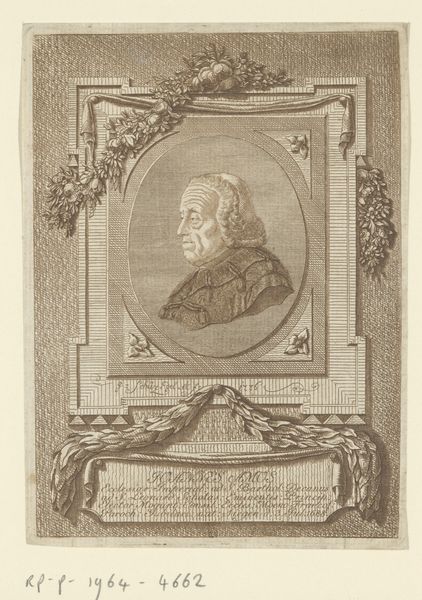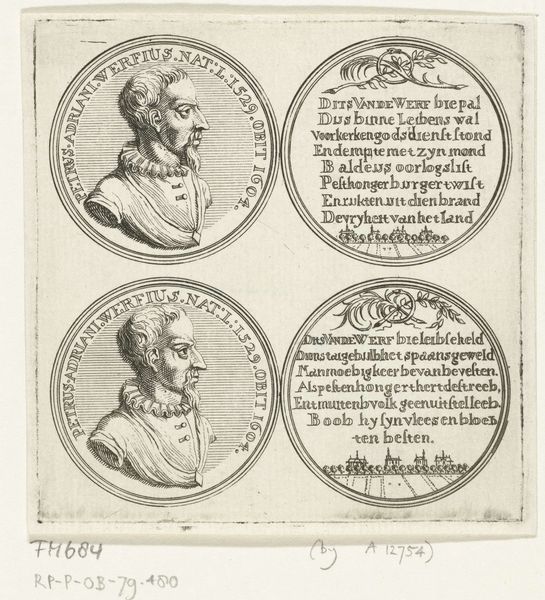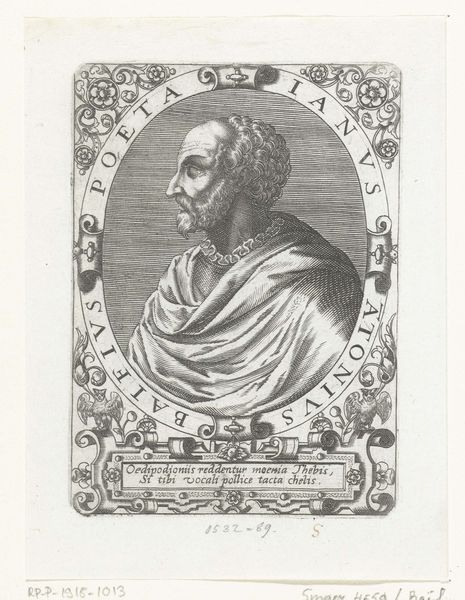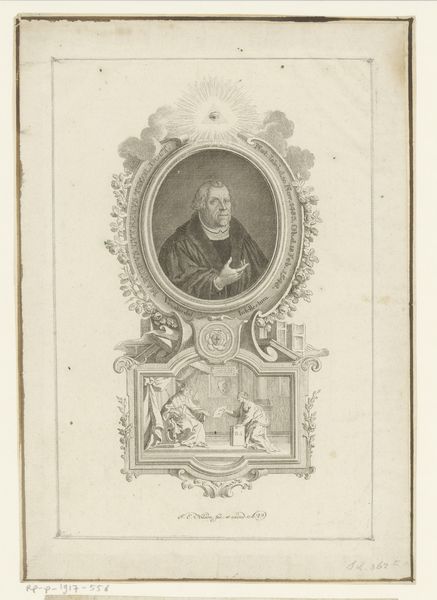
Twee penningen met portretten van bisschop Girolamo Vielmi en dominicaan Sixtus Medices 1720 - 1780
0:00
0:00
print, engraving
#
portrait
#
baroque
# print
#
old engraving style
#
personal sketchbook
#
engraving
Dimensions: height 201 mm, width 117 mm
Copyright: Rijks Museum: Open Domain
Curator: Here, we have a fascinating print entitled "Twee penningen met portretten van bisschop Girolamo Vielmi en dominicaan Sixtus Medices," which translates to "Two Medallions with Portraits of Bishop Girolamo Vielmi and Dominican Sixtus Medices." The print dates from sometime between 1720 and 1780 and was created by Carlo Orsolini. Editor: The first impression I have is one of solemnity. The stark contrast of the engraving emphasizes the weight of the figures portrayed; they are serious, dignified men, and their profile portraits have a somewhat detached, austere feel to them. Curator: Precisely. Medallions historically were often used to immortalize figures of great importance or authority, so it is of no surprise the artist uses profile views, which were favored in ancient coins. Consider how the circular frames act almost as halos around them, imbuing them with further reverence. Editor: Yes, the circular frames immediately make me consider systems of power, both spiritual and secular. We must remember the cultural authority these men held in their respective roles within the Church, during an era when religious figures significantly influenced social and political structures. I wonder, who commissioned this print? Curator: Inscriptions indicate the piece originates "Ex aeneo numismate apud Comitem Io. Mariam Mazzuchellum", suggesting its origin with Count Io. Maria Mazzuchelli, very likely to honor these theological figures who once held influence. Note how "Theol. Pat. O.P." and "Theol. Pat. Or. Pred." on the piece indicate theological distinctions for the sitters as well. Editor: It's a pointed reminder that these representations weren’t merely about individual likeness, but the perpetuation of a certain kind of legacy. These profiles subtly promote specific doctrines and affiliations of religious orders, all very strategic. Curator: And their beards are significant too; they were very often markers of wisdom, piety, or maturity during that time, projecting authority and respectability to observers of the portraits. These visual markers are important in Baroque portraiture, as much as any likeness! Editor: Absolutely. When we engage with historical portraits, it’s critical to examine the encoded social signaling, as that opens discussions on cultural narratives they reinforce and perhaps intentionally try to suppress. Thanks to your knowledge on iconography, I think I can perceive so much more from this! Curator: The dialogue has certainly helped me reflect on the powerful ways religious and political identities were visualized and promoted, which are often overlooked elements.
Comments
No comments
Be the first to comment and join the conversation on the ultimate creative platform.
